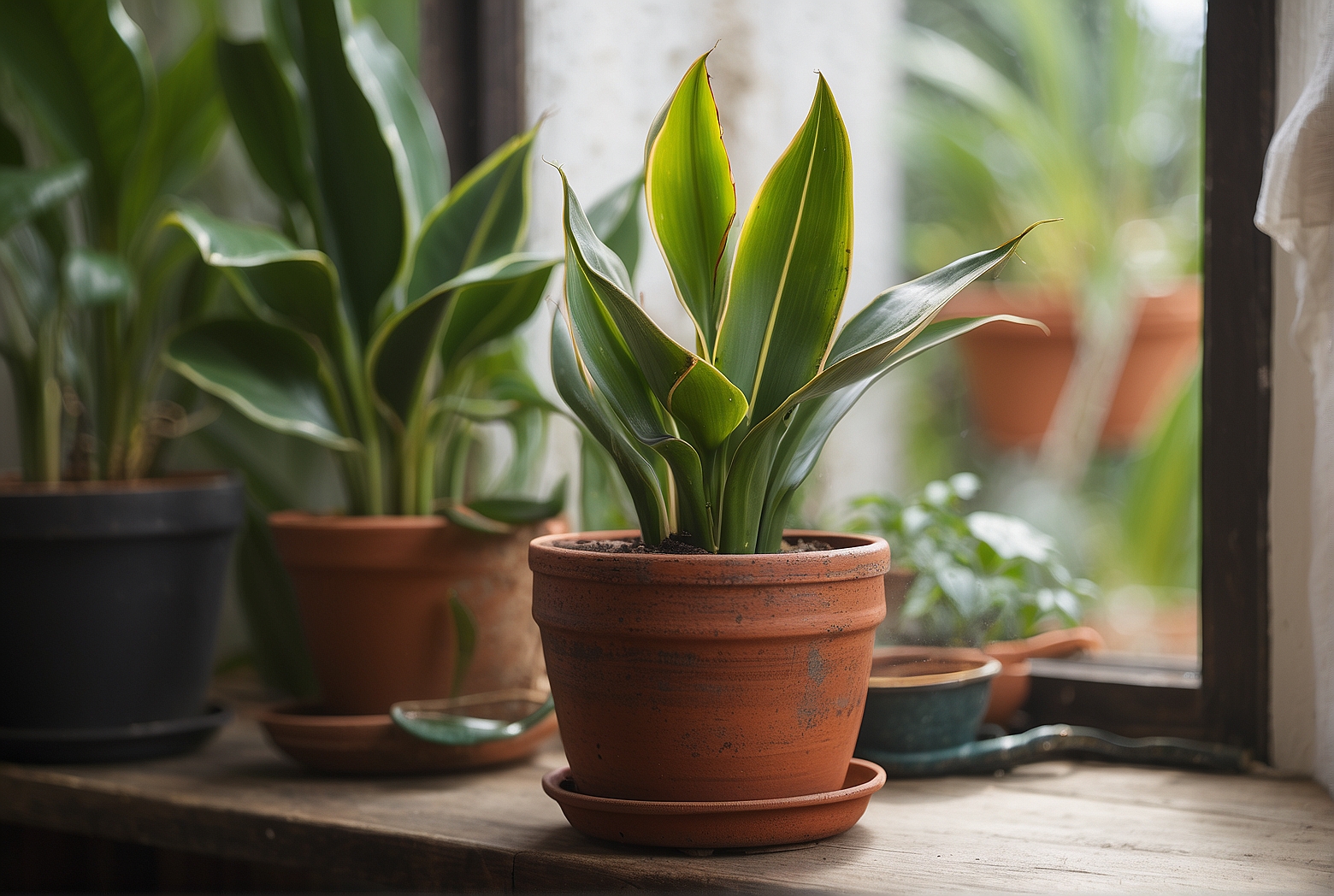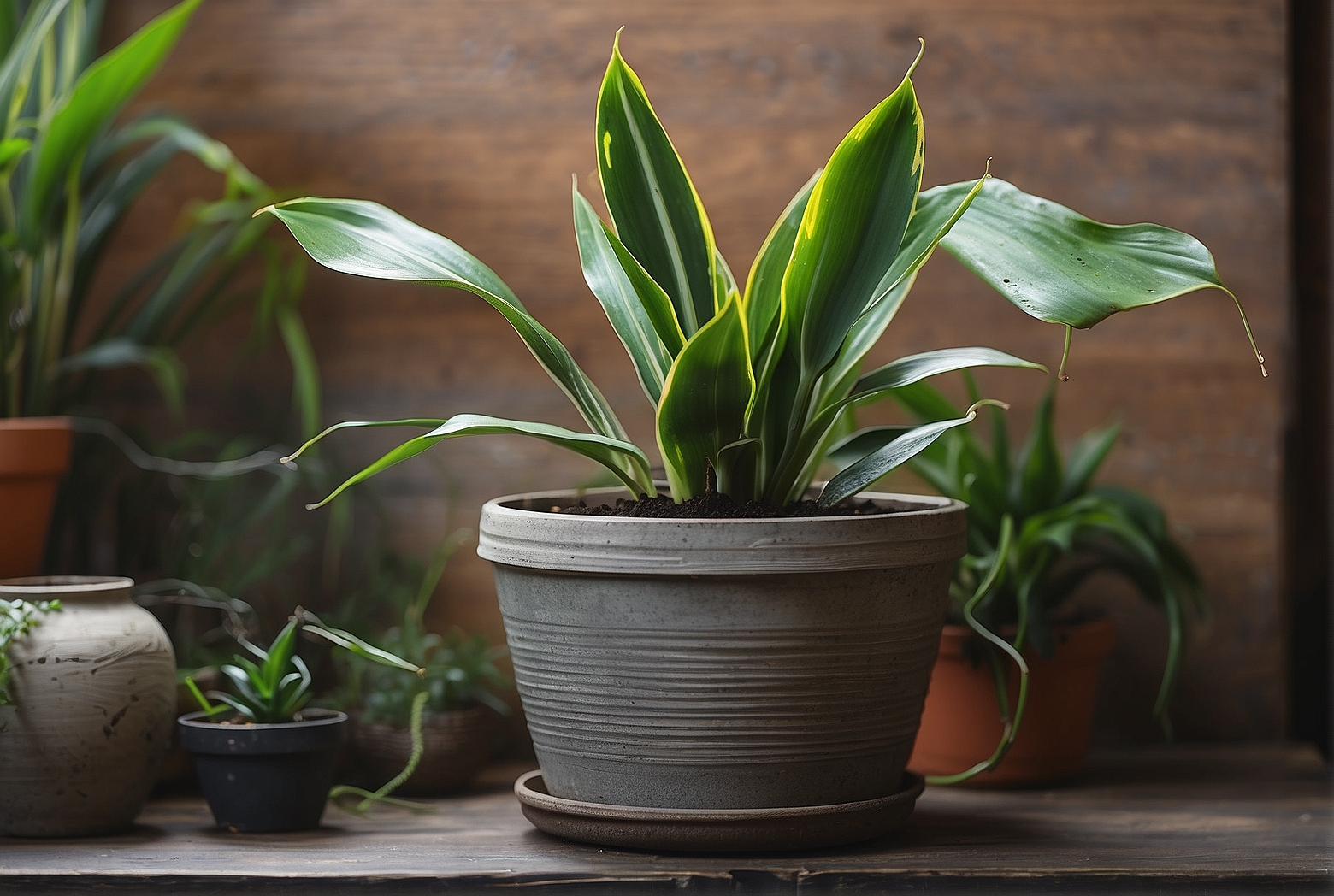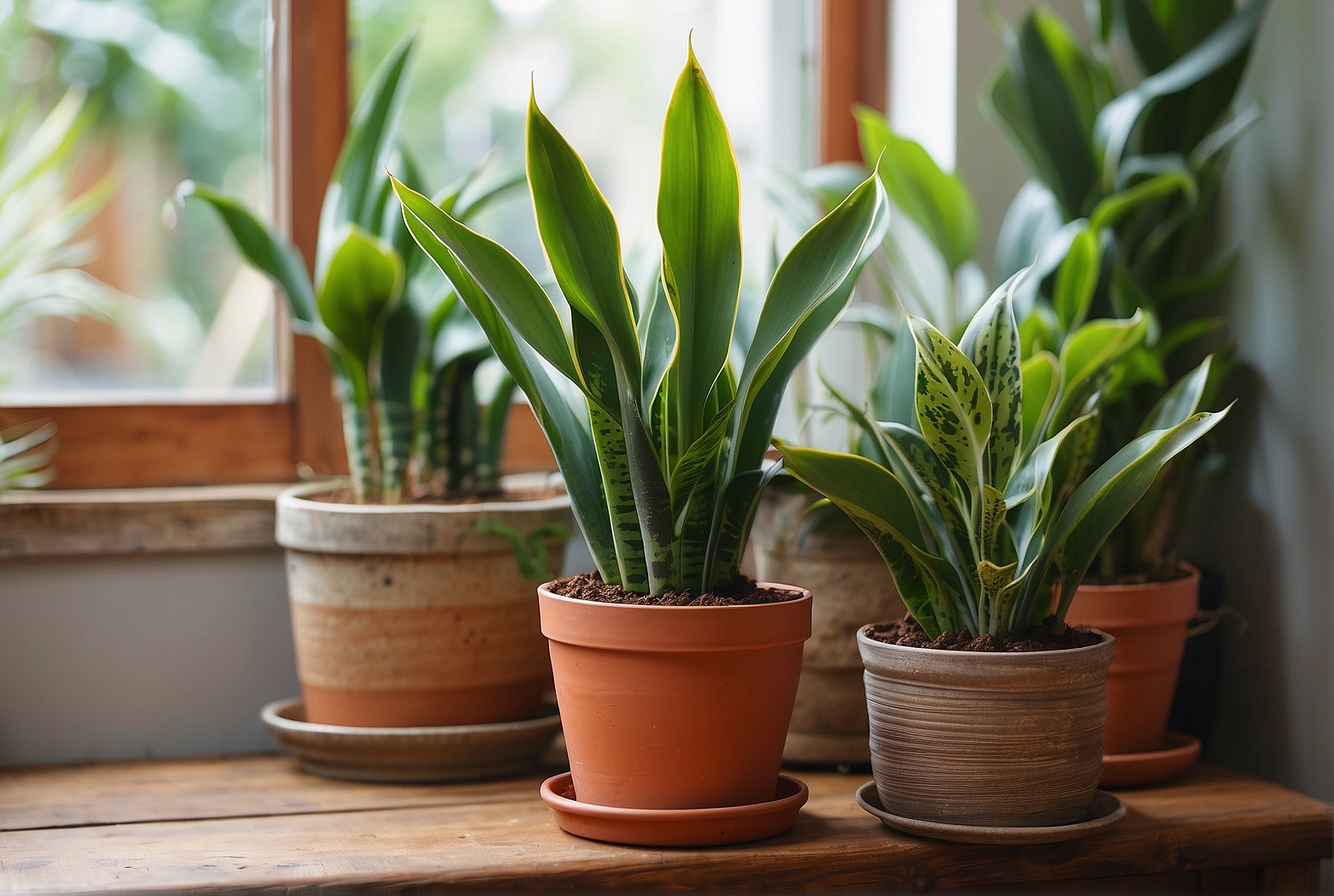Last Updated on April 20, 2024 by Tony Manhart
You love your snake plant and want to ensure that it thrives in its environment, but how can you tell if it needs watering? Don’t worry, we’ve got you covered. In this article, we will explore the signs that indicate when your snake plant is in need of a drink. From droopy leaves to a dry soil surface, these subtle cues will help you become an expert at gauging your plant’s hydration levels. So, grab your watering can and get ready to nurture your snake plant to perfection!
Yellowing leaves
Leaves turning yellow
If you notice the leaves of your snake plant turning yellow, it could be a sign of overwatering. While snake plants are known for their drought-tolerant nature, excessive watering can lead to root rot, causing the leaves to yellow and eventually die off. It’s essential to strike a balance between providing enough water for the plant’s needs and avoiding waterlogged soil.
Lower leaves are first to yellow
Yellowing of the lower leaves is typically the first sign of overwatering in snake plants. These leaves are often the oldest ones and are more susceptible to moisture-related issues. If you notice the lower leaves turning yellow and becoming mushy, it’s advisable to check the soil moisture and adjust your watering routine accordingly.
Yellowing leaves are a sign of overwatering
Yellowing leaves in snake plants indicate excess moisture in the soil. Overwatering can cause the roots to suffocate and become waterlogged, leading to a lack of oxygen uptake and subsequent leaf discoloration. To prevent further damage, allow the soil to dry out before watering again and ensure proper drainage in the plant’s pot or container.

Wrinkled leaves
Leaves looking shriveled
When the leaves of your snake plant start looking shriveled and less plump, it’s a clear sign of dehydration. The lack of water causes the cells within the leaves to lose their turgidity, resulting in a wrinkled appearance. This can happen when the plant isn’t receiving enough water, especially during hot or dry periods.
Leaves losing their turgidity
The turgidity of a plant’s leaves refers to their firmness and fullness, which is maintained through an adequate water supply. When a snake plant lacks water, its leaves gradually lose their turgidity and become limp and wrinkled. It’s crucial to address this by providing sufficient water to rehydrate the plant and restore its healthy appearance.
Wrinkled leaves indicate dehydration
Wrinkled leaves are a clear indication that your snake plant is suffering from dehydration. If left untreated, this can lead to stunted growth, decreased vitality, and eventual leaf death. To prevent further damage, make sure you water your snake plant thoroughly and regularly, especially during periods of warm weather or low humidity.
Dry soil
Check the soil moisture
To determine if your snake plant needs watering, it’s essential to check the moisture level of the soil. Stick your fingers about an inch into the soil and feel for moisture. If the soil feels dry to the touch, it’s a clear sign that the plant needs watering. On the other hand, if the soil feels consistently damp, it’s best to hold off on watering to avoid overwatering the plant.

Dry soil means the plant needs watering
Snake plants prefer well-draining soil, and when the soil becomes too dry, it’s a clear indication that your plant is thirsty. Proper hydration is crucial for the plant’s overall health and growth, so don’t hesitate to water it if the soil is dry.
Stick fingers an inch into the soil to check moisture level
The best way to check the moisture level of your snake plant’s soil is by using your fingers. Stick them about an inch into the soil and feel for dampness. If the soil feels dry at that depth, it’s a definite sign that the plant is in need of watering. However, if the soil is still moist at that level, you can delay watering for a little longer.
Crispy edges
Edges of the leaves turning brown and dry
If you notice the edges of your snake plant’s leaves turning brown and dry, it’s a sign of insufficient moisture reaching the leaf tissue. This lack of moisture causes the edges to become crispy and may eventually spread throughout the leaf if the plant’s water needs aren’t met.
Lack of moisture causes crispy edges
Crispy edges on the leaves of a snake plant are caused by a lack of moisture. When the plant doesn’t receive enough water, it cannot transport moisture to its leaf tips, resulting in browning and drying. To address this issue, make sure you water your snake plant thoroughly and evenly, ensuring that the entire root ball receives moisture.
Water the plant to prevent further damage
To prevent further damage and promote healthy leaf growth, it’s crucial to water your snake plant when you notice crispy edges. Watering will provide the plant with the necessary hydration and help restore the turgidity of the leaves. Be sure to water deeply to ensure the water reaches the roots and doesn’t sit on the surface, as this can promote fungal growth.
Drooping leaves
Leaves hanging down instead of standing upright
When the leaves of your snake plant begin to droop and hang down instead of standing upright, it’s a clear indication that the plant is extremely thirsty. In this state, the plant is signaling its need for water to revive and regain its normal appearance.
Drooping leaves indicate extreme thirst
Drooping leaves in a snake plant are a sure sign of extreme thirst. Limited water availability adversely affects the plant’s ability to maintain turgidity, resulting in wilting and drooping. It’s essential to act promptly and provide water to your snake plant to prevent further damage.
Water the plant immediately to revive it
If you notice your snake plant’s leaves drooping, it’s vital to water the plant immediately. Water deeply and thoroughly, ensuring that the root ball receives sufficient hydration. Over time, the leaves will regain their turgidity, and the plant will appear healthier and more vibrant.
Slowed growth
New leaves taking longer to emerge
A noticeable sign that your snake plant needs more water is when new leaves take longer to emerge than usual. Water plays a crucial role in facilitating optimal growth and development in plants. Inadequate water availability can slow down the emergence of new leaves and hinder the overall growth of your snake plant.
Plant growth stalled or slowed down
Snake plants typically exhibit steady growth under normal conditions. However, when the plant is lacking water, its growth can stall or slow down significantly. If you notice a lack of new leaf growth or the existing leaves remaining unchanged for an extended period, it’s a strong indication that your snake plant needs watering attention.
Lack of water hampers growth in snake plants
Water is an essential component for the growth and vitality of snake plants. Insufficient water supply can impede various physiological processes within the plant, including nutrient uptake and cell expansion. By providing adequate watering, you can ensure that your snake plant grows to its full potential and remains healthy.
Heavy pot
Lift the pot to check its weight
One simple way to determine if your snake plant needs watering is by lifting its pot and gauging its weight. When the pot feels heavy, it’s a sign that the soil is still holding enough moisture. On the other hand, if the pot feels noticeably lighter, it indicates that the soil has dried out, and the plant is in need of watering.
Dry soil lightens the pot
When the soil in your snake plant’s pot dries out, it becomes lighter, resulting in a noticeable difference in the pot’s weight. This change is a clear indication that the plant has utilized the available moisture, and it’s time to water the plant to replenish the soil’s moisture content.
Heavy pots indicate sufficient watering
If you find that your snake plant’s pot feels consistently heavy, it suggests that the soil retains enough moisture for the plant’s needs. This indicates that you have been providing sufficient water, allowing the plant to thrive. Maintaining a healthy balance of moisture in the soil is crucial to the overall well-being of your snake plant.
Wilted appearance
Leaves appearing limp and lifeless
When your snake plant’s leaves appear limp and lifeless, it’s a sign that the plant is severely dehydrated. Without adequate water, the cells within the leaves lose their turgidity, causing them to wilt and lose their natural vigor. Recognizing this wilted appearance is important to address the plant’s water needs promptly.
Plant losing its usual vigor
A snake plant that lacks water will gradually lose its usual vigor and energy. The plant’s leaves will become limp and lose their healthy and vibrant appearance. Without sufficient water supply, the plant’s growth and overall vitality are compromised. To restore its vigor, watering is necessary to rehydrate the plant and revive its vitality.
Lack of water causes wilting
Wilting in a snake plant is a consequence of water deprivation. When the plant doesn’t receive enough water, it cannot maintain the necessary turgidity in its cells, leading to its wilted appearance. To rectify this, it’s essential to provide the plant with ample water and ensure the soil remains moist but not waterlogged.
Narrowed leaves
Leaves curling inwards
One of the signs that indicate your snake plant needs watering is when its leaves start curling inwards. This curling is a protective mechanism adopted by the plant to minimize water loss through transpiration. It’s a clear signal that the plant is experiencing water stress and needs moisture to restore its leaf structure.
Leaves becoming narrower in shape
As a result of water deprivation, snake plant leaves may become narrower in shape. This narrowing is directly linked to the plant’s limited water availability, as it tries to reduce water loss surface area. By curling inwards and becoming narrower, the plant attempts to conserve moisture and prevent further dehydration.
Water the plant to restore healthy leaf structure
To restore healthy leaf structure in a snake plant, it’s crucial to water the plant adequately. By providing ample water, you can rejuvenate the leaves and encourage them to unfurl and regain their natural shape. Ensure proper hydration by watering thoroughly and allowing excess water to drain out from the pot.
Leaning stalks
Stalks leaning to one side
If you notice that the stalks of your snake plant are leaning or bending to one side, it’s an indication that the plant is trying to compensate for the lack of water. Without sufficient water, the plant might redistribute its limited resources towards maintaining its main structure, causing stalks to lean to one side.
Plant trying to compensate for lack of water
A snake plant that lacks water will attempt to compensate for this by redistributing its available resources. When water is scarce, the plant may prioritize maintaining its main structure by reinforcing stalks, resulting in a noticeable lean towards one side. To alleviate this, it’s important to provide water to the plant and support the stalks if necessary.
Water the plant and provide support if necessary
To help your snake plant regain its upright posture, you need to provide it with water and support as necessary. Watering will address the plant’s hydration needs and facilitate its recovery. If the leaning becomes too pronounced, gently provide support to the affected stalks, ensuring they regain their upright position gradually.
In conclusion, your snake plant’s appearance can provide valuable insights into its watering needs. From yellowing leaves to wrinkled leaves, dry soil, crispy edges, drooping leaves, slowed growth, heavy pot, wilted appearance, narrowed leaves, and leaning stalks, each sign indicates a specific watering requirement. By recognizing these signs and taking appropriate action, such as adjusting your watering routine or providing sufficient hydration, you can ensure the health and vitality of your snake plant. Remember to establish a balance between providing enough water and avoiding overwatering, as these sturdy plants prefer well-draining soil and can withstand periods of drought. With a little attention and care, your snake plant will flourish and continue to bring greenery and beauty to your space.
Tony Manhart is a passionate gardener who has been tending to gardens for over 20 years. He takes pride in creating beautiful outdoor spaces with plants, trees, and shrubs that can thrive in any environment. He loves to share his knowledge with others and has taught classes on gardening basics and advanced techniques. He is committed to sustainability, using natural and organic methods to create and maintain gardens. He also works with local organizations to create green spaces for communities. When he’s not gardening, Tony enjoys hiking, reading, and spending time with his family.


